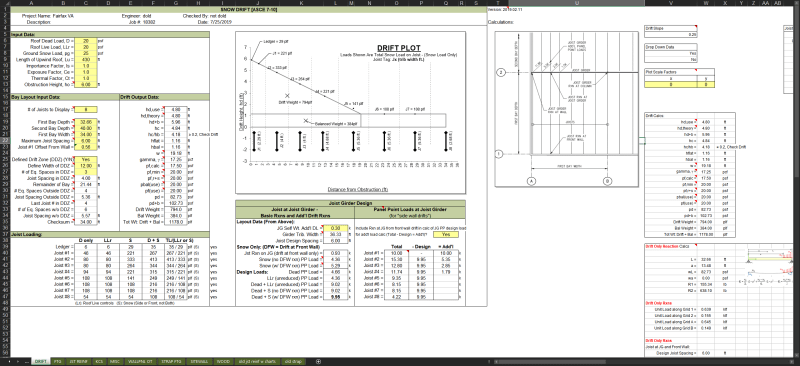Engineers in Canada or any engineer in this forum who has to deal with snow loads:
Assuming I have a typical 120ft long by 60ft wide single story building. There are three main W-beam bearing lines supporting OWSJ (OWSJ length is 30ft). Beams supporting joists are all 20ft spans.
Say there is 6ft tall parapets all around and some 6ft tall roof top units (maybe 6, one every 20 ft bay) distributed uniformly at the middle beam line. Assuming snow drift is 80psf max, 12ft long, with base snow load of 35psf.
If you design all the beams and columns for around 35+2/3*(80-35) = 65psf uniform snow load based on engineering judgement and also to save time, also assuming water ponding will not be a problem, do you think it is too conservative or do you model the actual trapezoidal loads at parapet and roof top units? I just wanted to check how other engineers here usually deal with this.
Thanks in advance.
Assuming I have a typical 120ft long by 60ft wide single story building. There are three main W-beam bearing lines supporting OWSJ (OWSJ length is 30ft). Beams supporting joists are all 20ft spans.
Say there is 6ft tall parapets all around and some 6ft tall roof top units (maybe 6, one every 20 ft bay) distributed uniformly at the middle beam line. Assuming snow drift is 80psf max, 12ft long, with base snow load of 35psf.
If you design all the beams and columns for around 35+2/3*(80-35) = 65psf uniform snow load based on engineering judgement and also to save time, also assuming water ponding will not be a problem, do you think it is too conservative or do you model the actual trapezoidal loads at parapet and roof top units? I just wanted to check how other engineers here usually deal with this.
Thanks in advance.



![[bigsmile] [bigsmile] [bigsmile]](/data/assets/smilies/bigsmile.gif) . I've tried to use maximum snow drift value previously but was met with frown by some senior engineers.
. I've tried to use maximum snow drift value previously but was met with frown by some senior engineers.